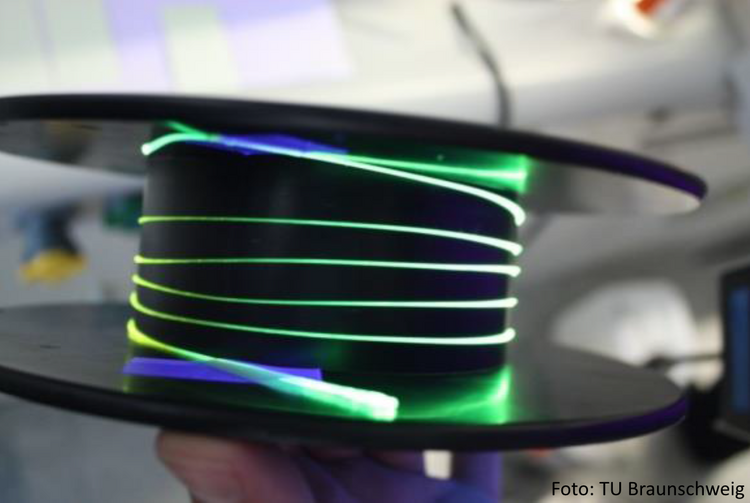LaPOF – Laser active polymer optic fibers

| E-Mail: | daniel.schrein@ita.uni-hannover.de |
| Year: | 2016 |
| Date: | 30-11-19 |
| Funding: | European Regional Development Fund (ERDF) |
| Duration: | 12/2016–11/2019 |
| Is Finished: | yes |
Optical signal transmission with light-conducting fibers is common especially in the telecommunications sector. It allows the rapid transfer of large amounts of data over long distances and is often realized with quartz glass fiber for such passive application. In addition to low loss characteristics, fibers made of quartz glass also have a high temperature resistance, which is critical for many areas of application.
The robustness against rapid temperature fluctuations, acceleration and vibration is very low compared to polymer materials, as glass fibers have virtually no elasticity. For this reason polymer-optical fibers (POF) are better suited for many application areas, even though usage is restricted through the lower glass transition temperature and considerably higher absorption. In addition to the pure transmission of data, polymer optical fibers in particular can also be fitted with active dyes so that laser-active POFs (LaPOFs) arise and accordingly more applications, for example in sensor technology and long distance transmission of information, are possible.
Within the framework of the LaPOF project, research institutions from Hanover (ITA, IQ, LZH) and Braunschweig (IHF) deal with the design and the production and characterization of laser-active polymer fibers. This is where the main focus is on the research for suitable materials for the manufacture and subsequent investigation of the optical fiber with respect to optical and mechanical properties as well as the laser activity. For the actual production, different approaches are applied and optimized with regard to the realization of the low absorption characteristics as well as a small number of modes. At the end, the practicality of LaPOFs shall be shown with a Demonstrator.




















